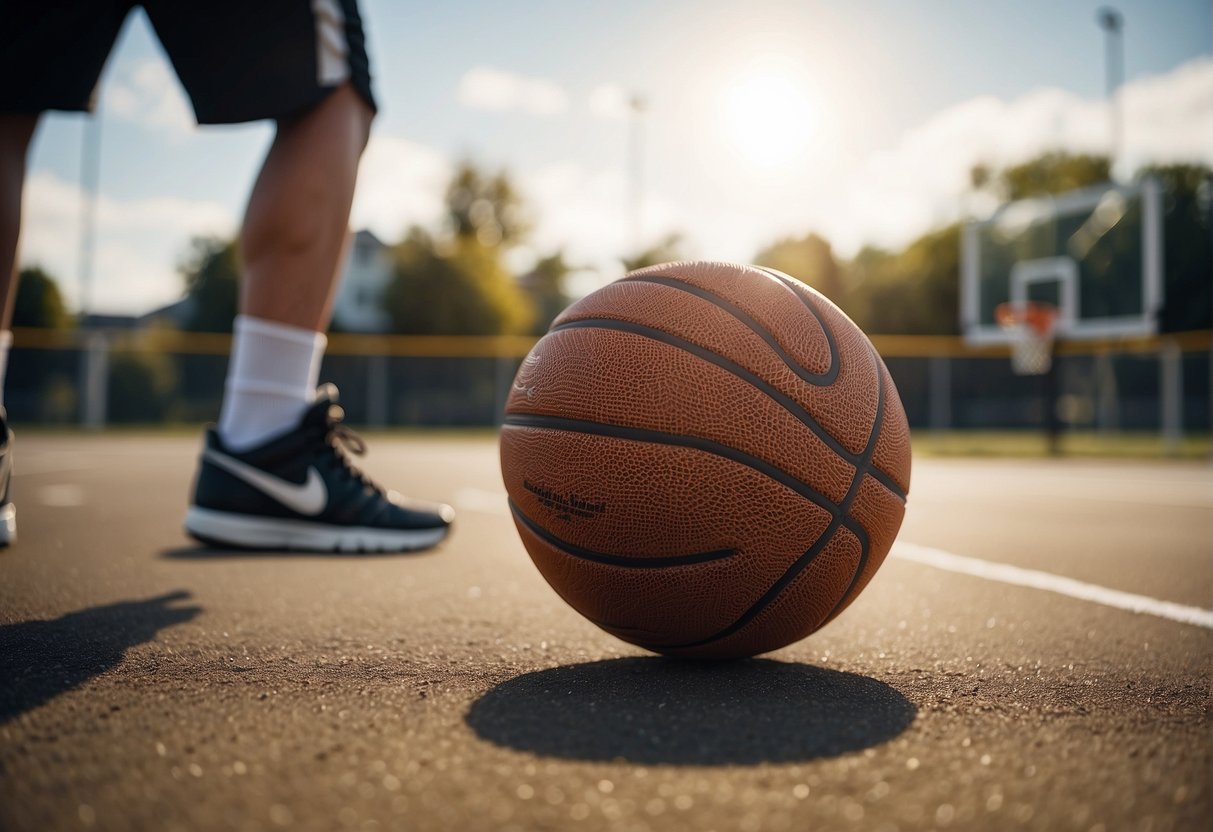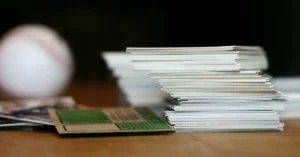Brush up on basketball rules with my expert guidance: what is carry in basketball? Learn about the violation and its implications for ball handling.
What is Carry in Basketball 2024? The Basics
The Concept of Dribbling in Basketball
Dribbling in basketball is the method by which you, as a player, repeatedly bounce the ball on the court using your hand. It is a fundamental skill that allows you to move across the court while maintaining legal possession of the ball. 7For dribbling to be effective, it’s essential to use your fingertips rather than the palm of your hand, as this allows for better control.
Proper Dribbling Techniques:
- Keep the ball low to the ground to make it harder for opponents to steal.
- Use your body and arm to shield the ball from defenders.
- Change your speed and direction to keep defenders guessing.
Importance of Dribble Control
Control over your dribble prevents turnovers and sets the rhythm for your team’s offense. Your dribbling skills help you navigate through defenders, create scoring opportunities, and maintain the game’s flow.
To Improve Ball Control:
- Practice dribbling with both hands to become more versatile.
- Develop a sense of the ball’s movement and your hand positioning for precise ball-handling.
- Always be aware of your surroundings to avoid running into a traffic of defenders or dribbling into corners.
What Constitutes a Carry in Basketball

Defining a Carry Violation
A carry, often called a carrying violation, happens in basketball when you, the dribbler, place your hand too far to the side or underneath the ball. This action disrupts the dribble because the ball comes to a rest in one or both hands, and it’s distinct from merely bouncing the ball along the court.
Distinguishing Between Carrying and Palming
In essence, carrying and palming are closely related but there’s a subtle difference. While carrying refers to a pause in dribbling with improper hand placement, palming specifically implies you’re allowing the ball to come to rest in your hand before resuming the dribble. It’s the positioning of your hand underneath the ball that typically leads to a palming call.
Consequences of Committing a Carry

Penalties and Turnovers Due to Carrying
If you commit a carry, the immediate penalty is a turnover, which halts play and awards possession of the ball to the opposing team. The area from where the ball is inbounded depends on the level of play. For instance, in high school and college basketball, the ball is thrown in from the sideline or baseline closest to where the violation occurred. If you’re playing in the NBA, the ball is inbounded between the free throw line and baseline, providing a defensive advantage.
You must maintain proper dribbling form to avoid this penalty, as turnovers can significantly impact your team’s ability to score and defend.
Referees’ Role in Identifying Carries
Referees have a critical role in monitoring for carries throughout a basketball game. Once a referee spots a carrying violation, they blow their whistle to stop play and perform a specific hand signal indicating the violation. This action communicates to everyone on the court, as well as fans, that a carry has occurred.
As a player, you must recognize referees’ signals and understand their calls since your response can affect the next play or how you adjust your technique. Watch for the refs’ indicators to better your game and avoid future carrying violations.
Improving Ball-Handling to Avoid Carries

Enhancing Dribbling Technique
Your dribbling technique is fundamental to preventing carries. Keep your hand on the basketball rather than letting it rest beneath it. Here are a few pointers to enhance your dribbling:
- Low Dribble: Keep the ball low to the ground to maintain tighter control and make it harder for defenders to steal it.
- Hand Positioning: Your fingers should be spread wide, and you should dribble with your fingertips, not your palm, to avoid palming the ball.
- Dribbling Stance: Bend your knees and stay athletic to respond quickly and protect the ball.
Practicing Effective Ball-Handling
Developing practical ball-handling skills requires regular practice. Your aim should be to get comfortable with the ball so that you can move it without looking down. Incorporate these two key exercises into your routine:
- Crossover Drills:
- Static Crossover: Start by practicing your crossover motion stationary, focusing on a soft touch and quick hand switch.
- Full-Speed Crossover: As you progress, move into a full-speed crossover, adding in a deliberate hesitation move to misdirect the defender.
- Two-Ball Dribbling Drills:
- Simultaneous: Dribble two balls simultaneously to enhance hand independence and coordination.
- Alternating: Dribble one ball in one hand and then the other, alternating rhythmically to improve hand-eye coordination.
The Impact of Carry Violations on Basketball Strategy

Adapting Offensive Plays to Rules
To avoid a carry violation, you must teach players precise ball-handling techniques. Since the definition of a carry includes placing the hand underneath the ball while dribbling, offensive plays must stress keeping the palm open and above or to the side of the ball.
For example, when moving towards the basket, ensure that dribbling stays consistent and the hand placement is correct, thus eliminating the chance of an abrupt stoppage due to a carry violation, as emphasized by Dunk or Three.
Understanding Defensive Responses to Dribbling
On the flip side, the defense must anticipate and capitalize on carry violations. When you’re on defense, stay alert and apply pressure to force the ball handler into a precarious position where they might slip up their dribbling technique. Encouraging fast-paced, aggressive defense can increase the likelihood of offensive errors, resulting in turnovers that can shift the game’s momentum, as discussed by Basketball For Coaches.
Prominent Figures and the Evolution of Dribble Rules

Influential NBA Players and Their Dribbling
Throughout the history of the NBA, players like Allen Iverson and Isaiah Thomas have been pivotal in shaping the art of dribbling. Iverson, known for his lightning-fast moves and the infamous crossover, often had his style under scrutiny, raising questions about carrying violations.
Meanwhile, Isaiah Thomas displayed exceptional ball-handling skills, inspiring generations to mimic his technique.
Players such as James Harden and Trae Young exhibit impressive scores and engage the audience with their deft handling and innovative moves that test the limits of the rules. Michael Jordan, a Hall of Fame inductee, also showed how adept dribbling could elevate one’s game to legendary status.
These superstars have often stirred controversy and discussions about what constitutes carrying, fostering a more lenient set of regulations over time.
Changes in Dribbling Regulations Through History
The NBA and the NCAA have periodically amended dribbling rules to maintain fairness and challenge athletes. Initial regulations were strict, penalizing any carry immediately. As the game’s pace quickened, subtle changes were made.
- Early Days: Strict interpretation with immediate turnovers for carrying.
- Rising Leniency: Rules became more lenient to accommodate creative dribbling styles.
- Recent Adjustments: In response to the fluid playing styles of contemporary NBA players, the NBA occasionally tweaks its rulebook to balance the spectacle of skill with the need for fair play.
FAQ
Is a high dribble a carry?
A high dribble may sometimes be called as a carry violation in basketball if the player’s hand is positioned underneath the basketball for too long, allowing the ball to momentarily come to rest. However, not all high dribbles are automatically considered carries; it depends on the specific circumstances and the interpretation of the officials.
What is the difference between dribble and carry?
In basketball, dribbling involves continuously bouncing the ball on the floor with one hand while moving around the court. A carry violation occurs when a player places their hand underneath the ball while dribbling, momentarily pausing the ball’s downward motion, or allowing it to come to rest. This action is known as “carrying” the ball and is considered a violation.
How do you avoid carry in basketball?
To avoid a carry violation in basketball, players should ensure that their hand remains on top of the basketball while dribbling and that they do not allow the ball to come to rest or pause its downward motion. Practicing proper dribbling technique, keeping the hand on the side or top of the ball, and maintaining a fluid motion can help prevent carrying violations.
If you enjoyed reading about the topic: What is Carry in Basketball, leave a comment and stay updated on Pinterest for more exciting basketball news.
Leave me a comment and make sure to also check out White NBA Players Current.






